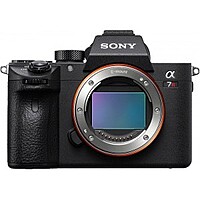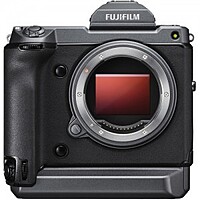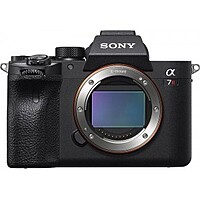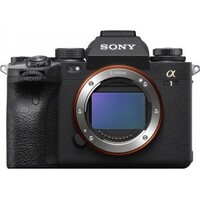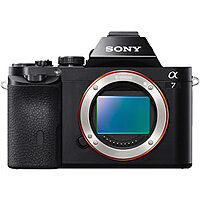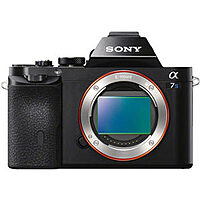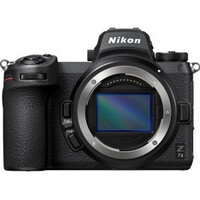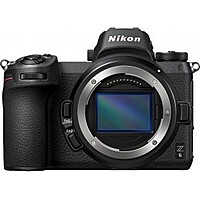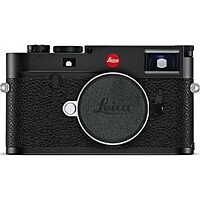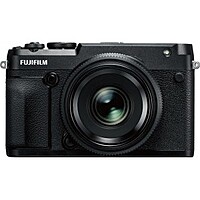Fujifilm X-H1 with Fujifilm GFX 50S Overview
Let's compare GFX 50S with X-H1. Both cameras produced
FujiFilm.
These models are included in the Pro Mirrorless cameras.
Fujifilm GFX 50S was released in 2017, and Fujifilm X-H1 in 2018.
X-H1 is newer, which is a plus. GFX 50S 1 years older.
The sensor resolution of GFX 50S is greater than that of X-H1. The difference of 27 MP is quite a lot.
The more megapixels the camera has, the more detailed and clear the picture will be. The number of megapixels will also affect the maximum size of the photos, which then can be printed without loss of quality.
At the second camera (X-H1), the minimum ISO value is lower, which gives more opportunities for shooting in daylight.
A larger maximum ISO allows you to take good pictures in the dark.
X-H1 has image stabilization(5-axis Sensor-shift), GFX 50S doesn’t, it is a big minus.
Both cameras feature a 3-inch tilting screen.
Both cameras have a electronic viewfinder.
All viewfinders has 3690k dot resolution.
Burst mode, also called continuous shooting mode, sports mode or continuous high speed mode, is a shooting mode in still cameras. Fujifilm GFX 50S has 14.0 fps continuous shooting.
Fujifilm GFX 50S has 14.0 fps continuous shooting.
| General |
GFX 50S |
X-H1 |
| Brand |
FujiFilm
|
FujiFilm
|
| Model |
GFX 50S |
X-H1 |
| Announced |
January, 2017 |
February, 2018 |
| Body Type |
Mid-size SLR |
SLR-style mirrorless |
| Lens |
| Lens Mount |
Fujifilm G |
Fujifilm X |
| Manual Focus |
|
|
| Focal Lens Multiplier |
0.79 |
1.5 |
| Number of Lenses |
11 |
51 |
| Macro Focus Range |
n/a |
n/a |
| Screen |
| Screen Size |
3" |
3" |
| Screen Type |
Tilting |
Tilting |
| Screen Resolution |
2360k pixels |
1040k pixels |
| Touch Screen |
|
|
| Live View |
|
|
| Viewfinder |
| Viewfinder |
Electronic |
Electronic |
| Viewfinder Resolution |
3690 |
| Viewfinder Coverage |
100% |
100% |
| Viewfinder Magnification |
1.07 |
0.75 |
| Autofocus |
| AF Touch |
|
|
| AF Continuous |
|
|
| AF Single |
|
|
| AF Tracking |
|
|
| AF Selective |
|
|
| AF Center |
|
|
| AF Multi Area |
|
|
| AF Live View |
|
|
| AF Face Detection |
|
|
| AF Contrast Detection |
|
|
| AF Phase Detection |
|
|
| Number of Focus Points |
117 |
325 |
| Number of Cross Focus Points |
0 |
0 |
| Photography Features |
| RAW Support |
|
|
| Min Shutter Speed |
1/360 sec |
1/30 sec |
| Max Shutter Speed |
1/4000 sec |
1/8000 sec |
| Continuous Shooting |
3.0 fps |
14.0 fps |
| Shutter Priority |
|
|
| Aperture Priority |
|
|
| Manual Exposure Mode |
|
|
| Exposure Compensation |
|
|
| Custom White Balance |
|
|
| Image Stabilization |
|
|
| Built-in Flash |
|
|
| Flash Range |
no built-in flash |
no built-in flash |
| Flash Modes |
Auto, standard, slow sync, manual, off |
Auto, standard, slow sync, manual, commander |
| External Flash |
|
|
| AE Bracketing |
|
|
| AE Bracketing Range |
±5 EV |
±5 EV |
| WB Bracketing |
|
|
| Sensor |
| Sensor Size |
Medium format |
APS-C |
| Sensor Type |
CMOS |
CMOS |
| Sensor Dimensions |
mm |
23.5 x 15.6 mm |
| Sensor Area |
0.0 mm² |
366.6 mm² |
| Sensor Resolution |
51 MP |
24 MP |
| Max Image Resolution |
8256 x 6192 |
6000 x 4000 |
| Max Native ISO |
12800 |
12800 |
| Min Native ISO |
100 |
200 |
| Max Boosted ISO |
102400 |
51200 |
| Min Boosted ISO |
50 |
100 |
| Video Features |
| 4K |
|
|
| Max Video Resolution |
1920 x 1080 |
4096 x 2160 |
| Video Formats |
MPEG-4, H.264 |
MPEG-4, H.264 |
| Timelapse Recording |
|
|
| Microphone Port |
|
|
| Headphone Port |
|
|
| Exposure Modes |
| Multi-Segment |
|
|
| Average |
|
|
| Spot |
|
|
| Partial |
|
|
| AF-Area |
|
|
| Center Weighted |
|
|
| Connectivity |
| GPS |
None |
None |
| Wireless Connectivity |
Built-In |
Built-In |
| Bluetooth |
|
|
| HDMI |
|
|
| USB |
USB 3.0 (5 GBit/sec) |
Yes |
| Battery |
| Battery Life |
400 shots |
310 shots |
| Battery Type |
Battery Pack |
Battery Pack |
| Battery Model |
NP-T125 |
|
| Physical |
| Weight |
740 g |
673 g |
| Physical Dimensions |
148 x 94 x 91 mm |
140 x 97 x 86 mm |
| Environmental Sealing |
|
|
| Water Proof |
|
|
| Dust Proof |
|
|
| Shock Proof |
|
|
| Crush Proof |
|
|
| Freeze Proof |
|
|
| Shock Proof |
|
|
| Storage |
| Storage Type |
SD/SDHC/SDXC (dual slots, UHS-II supported) |
Dual SD/SDHC/SDXC (UHS-II compatible) |
| Storage Slots |
2 |
2 |
| Other Features |
| Self Timer |
|
|
| Selfie Friendly |
|
|
Interesting Pro Mirrorless

